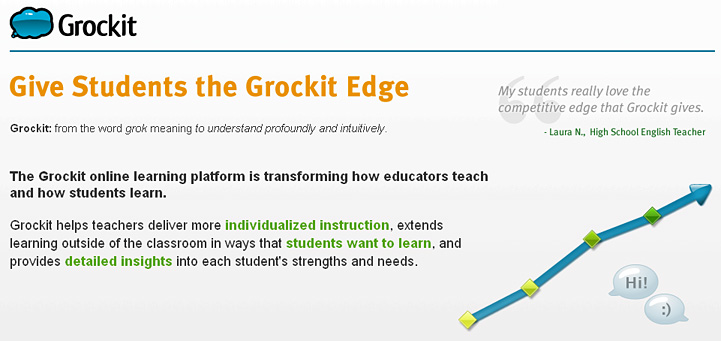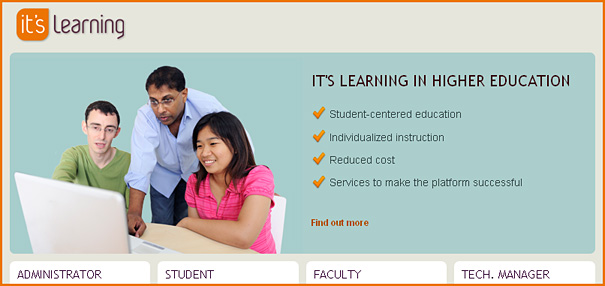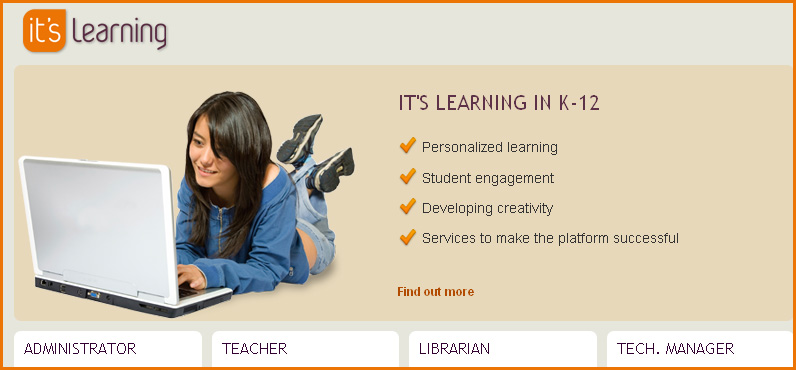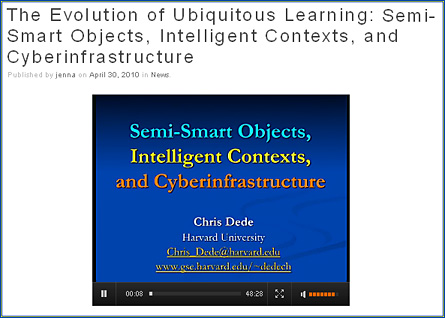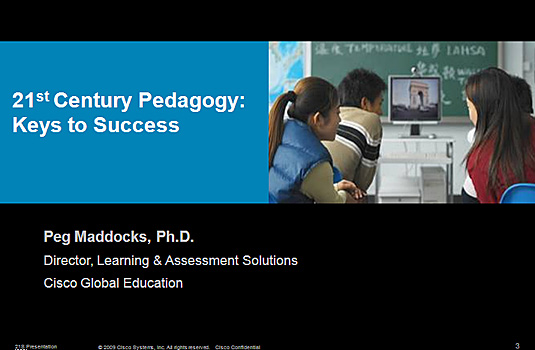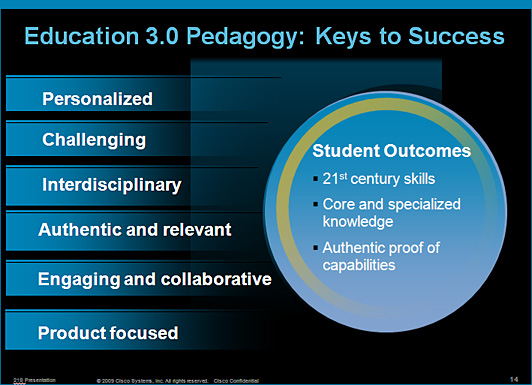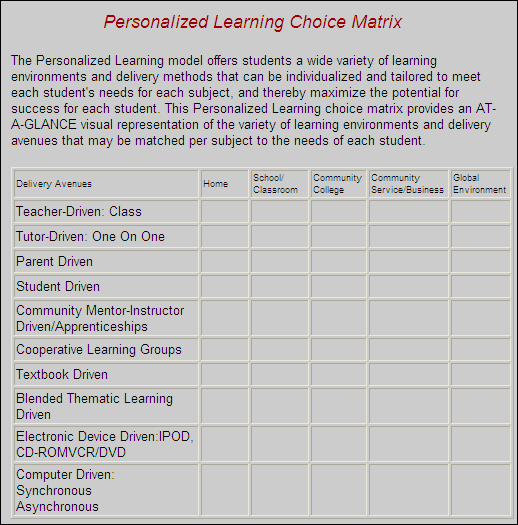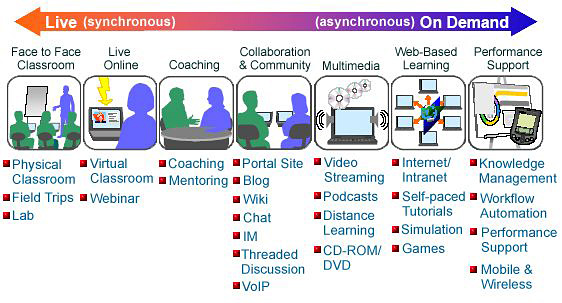Personalizing learning – the important role of technology — from OpenEducation.net by Thomas
New Viewpoint – Personalizing Learning
Clearly, that mindset has changed. With learning styles now a part of the educational landscape today’s teacher is expected to adjust to the varied preferences of students so as to maximize the learning potential of each individual in the classroom.
Such an approach has been characterized by the global term: personalizing the learning experience. The concept is considered as critical to the next generation of teachers as it is for the next generation of students.
Personalizing learning involves differentiating the curricula, including expectations and timelines, and utilizing various instructional approaches so as to best meet the needs of each individual. Essentially, students should be able to do varying assignments and have the freedom to work at a pace that is conducive to their abilities and skill set.
(Inserted comment here from DSC — Can you imagine how a teacher or professor is supposed to do/manage this for 20-25+ students without the use of technology — and with that number of students in the classroom about to go up substantially?)
Not too surprisingly, individual elements of a personalized learning environment are well known to current educators. The challenge is not so much what those elements consist of but how to piece the elements together to form a cohesive strategy.
Most importantly, personalizing learning for the current generation of learners demands specific technologies. Educators need to understand that children are growing up in a media-rich environment.
Schools must deliver a product that engages students and generates within them the desire to learn. Today’s curricula must involve liberal uses of technology whenever it is relevant to the task at hand.
But technology also plays a more important role in the personalization process. Ultimately it is the conduit for teachers to move to a learning approach that features materials developed for each individual student.
Relevant graphic below from DSC:










